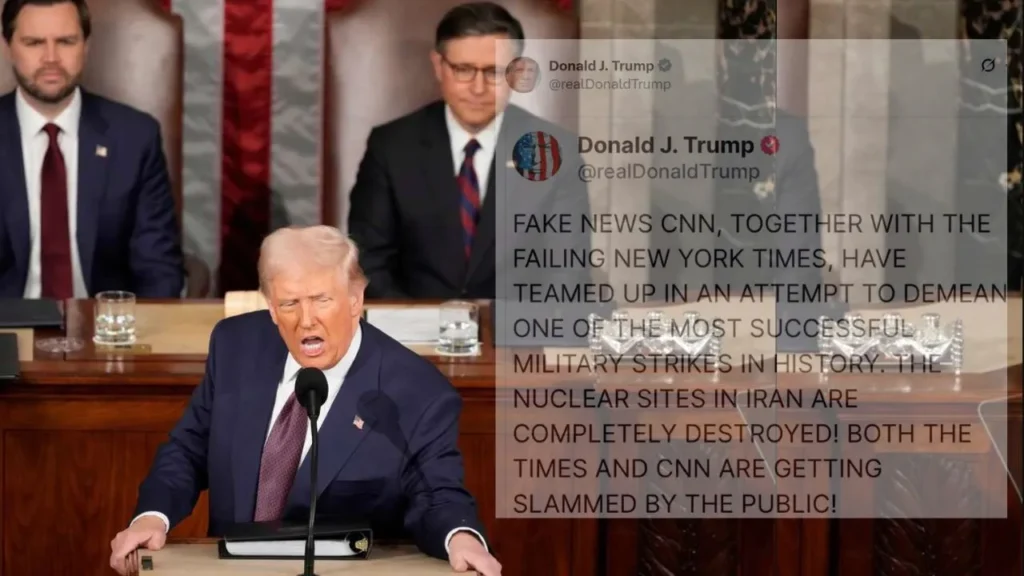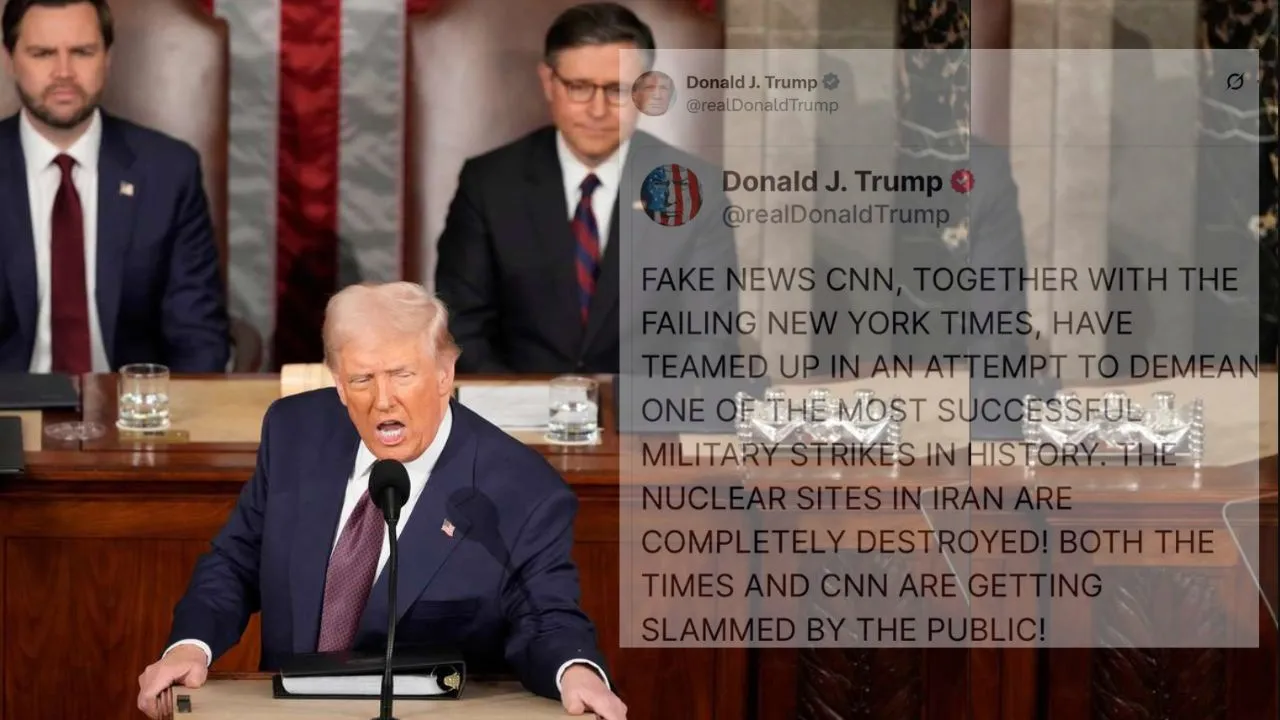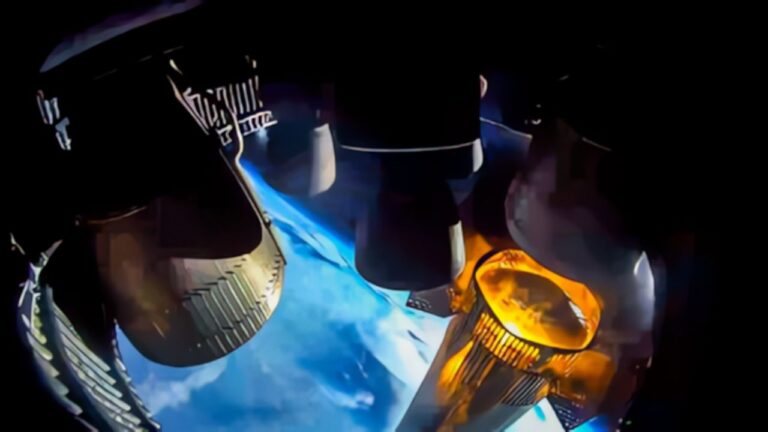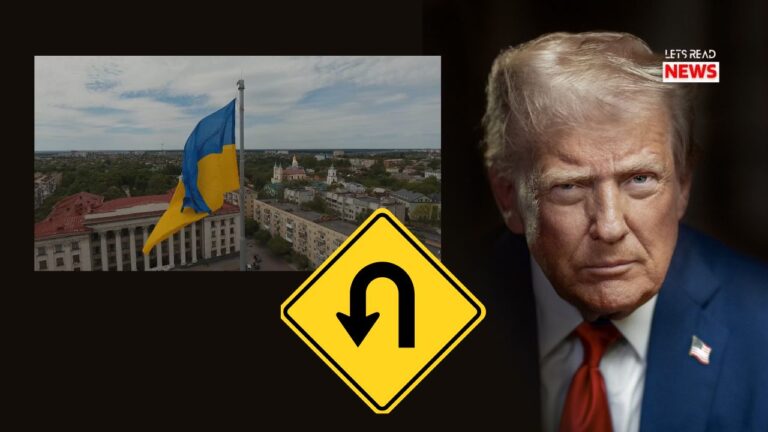Unpacking the Claims: Trump’s Assertion of Destroyed Iranian Nuclear Sites Sparks Debate

On Wednesday, June 25, 2025, former President Donald Trump took to X with a bold declaration that has since ignited a firestorm of debate. In a post from his handle @realDonaldTrump, he claimed that a U.S. military strike—one he described as “one of the most successful in history”—had “completely destroyed” Iran’s nuclear sites. The post, accompanied by a fiery image, accused CNN and the New York Times of teaming up to “demean” the operation, asserting that both outlets were facing public backlash. But as the day unfolds, with it now 1:20 PM IST, the veracity of these claims is being fiercely contested, drawing attention to a rare public rift between the White House and its own intelligence community.
The Claim and the Context
Trump’s statement comes on the heels of a tumultuous two weeks in the Middle East. The conflict between Israel and Iran escalated dramatically on June 13, 2025, when Israel launched a surprise air war, targeting key military and nuclear facilities. The operation, which included the assassination of top Iranian commanders and significant damage to air defenses, prompted retaliatory missile strikes from Iran, injuring dozens in Israel and targeting U.S. bases in Qatar. Amid this chaos, the U.S. conducted airstrikes—codenamed “Midnight Hammer”—on three Iranian nuclear facilities: Fordo, Natanz, and Isfahan. Trump, who has been vocal about his administration’s foreign policy, seized the moment to tout the operation’s success.
However, a classified report from the Defense Intelligence Agency (DIA), released earlier today and cited by The Washington Post, paints a starkly different picture. According to three sources familiar with the assessment, the strikes—executed with B-2 bombers and Tomahawk missiles—set Iran’s nuclear program back by months but did not “eliminate” it. The report suggests that while entrances to underground facilities were sealed, the core infrastructure remains intact, contradicting Trump’s assertion of complete destruction. This discrepancy has fueled a rare public spat, with intelligence officials quietly challenging the White House narrative.
Reactions on X and Beyond
The X thread following Trump’s post reveals a polarized response. Supporter hailed the strike as a triumph, sharing memes that juxtapose Trump’s administration with its predecessors, while sarcastically dismissed concerns about the claim’s accuracy, playing into the “gullible MAGA” trope. Critics, however, were quick to pounce.one user pointed to the DIA report, urging Trump to align with his own intelligence agencies, while another user suggested the operation’s failure might irk Israel’s Prime Minister Netanyahu, a key ally.
Mainstream media outlets, including CNN, have reported on the DIA’s findings, prompting Trump’s “fake news” jab. Yet, the public’s reaction appears mixed. Satellite imagery and independent analyses from groups like the International Atomic Energy Agency (IAEA) indicate partial damage to Iran’s nuclear sites, with over 900 pounds of 60% enriched uranium still unaccounted for post-strike. This has left analysts scrambling to verify the extent of the damage, with no peer-reviewed military assessment yet confirming Trump’s claims.
A Pattern of Narrative Control?
This isn’t the first time Trump has clashed with media and intelligence narratives. During his first term, he frequently labeled unfavorable reports as “fake news,” a tactic that resonated with his base but drew skepticism from fact-checkers. The current claim, however, carries higher stakes given the fragile ceasefire announced by Trump on Monday night, which both Israel and Iran have agreed to honor. Some speculate the exaggerated rhetoric could be a bid to bolster his image ahead of potential political moves, though no evidence supports this as a primary motive.
Iran’s response remains a wildcard. After the U.S. strikes, Tehran launched missiles at Israeli cities and U.S. bases, injuring 86 and killing two, according to the Israeli Defense Forces (IDF). The ceasefire’s stability hinges on whether Iran perceives the strikes as a decisive blow or a provocation, with analysts warning of possible retaliatory moves like a Strait of Hormuz blockade.
What Lies Ahead?
As of 1:20 PM IST, the situation remains fluid. The lack of independent verification—beyond initial DIA reports and fragmented satellite data—leaves room for doubt. Trump’s call for “regime change” in Iran, floated on social media, adds another layer of complexity, suggesting a long-term strategy that could unravel the ceasefire. Meanwhile, the public on X continues to debate, with memes and sarcasm overshadowing substantive analysis.
For now, the truth lies somewhere between the bombast of Trump’s post and the cautious assessments of intelligence agencies. As more data emerges, the world watches to see whether this strike will be remembered as a historic success or a overstated misstep in an already volatile region. One thing is clear: the narrative war is as intense as the military one, and the coming days will test the boundaries of fact and rhetoric.







